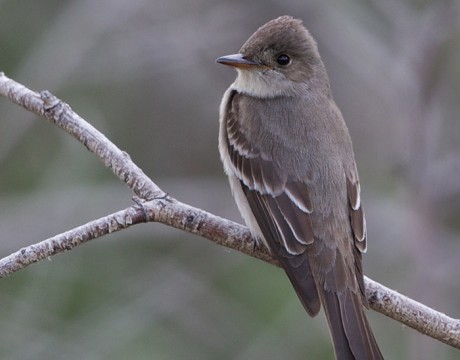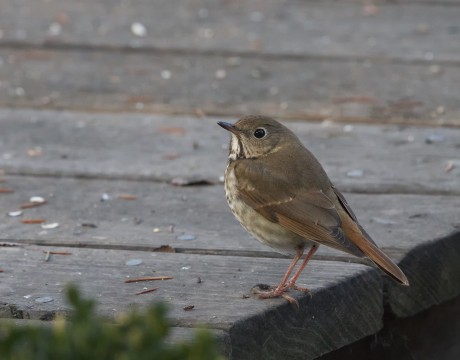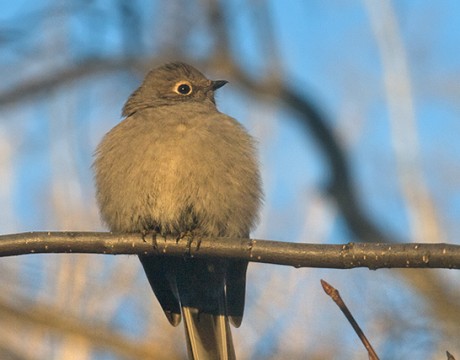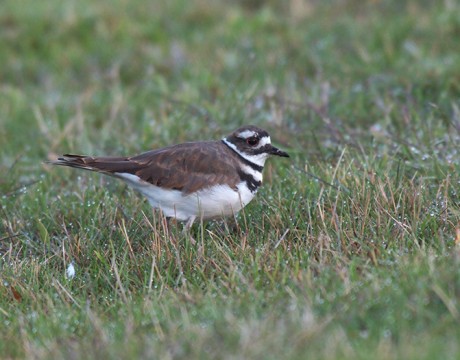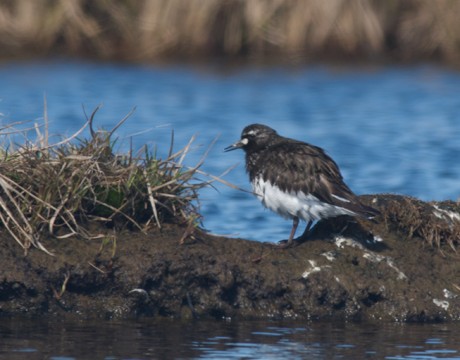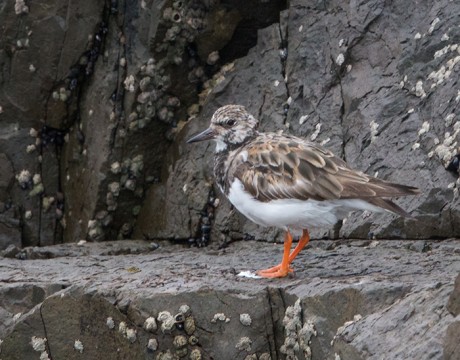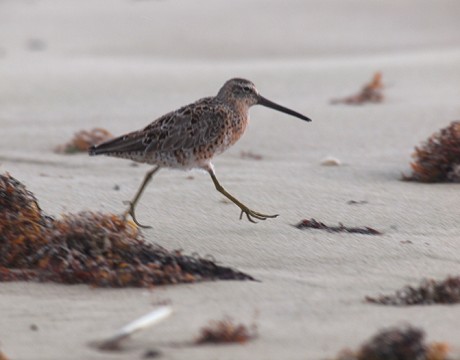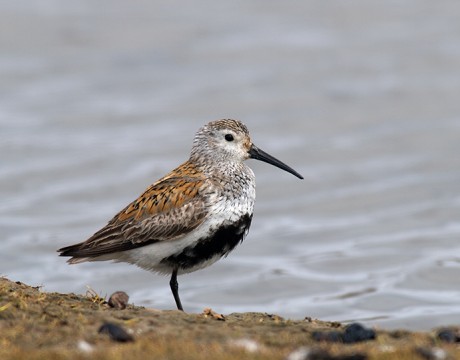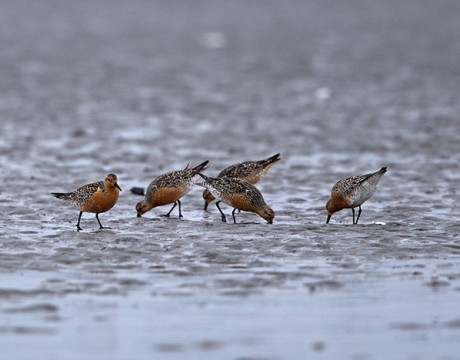Bird of the Week – Western Wood-Pewee
There are three species in this genus this small flycatchers, but only one, the Western Wood-Pewee, is commonly found in Alaska. This is a small, drab bird, but the slight crest, indistinct or missing eye ring and whitish belly and throat make it fairly easy to identify in field. At least is you are outside the range of Eastern Wood Pewees, and happily, in Alaska we are. Fairbanks is near the northerly limit of the species’ documented breeding range. They winter in Central and northern South America. Any bird that eats mosquitoes is a winner, in WC’s thinking. Which makes the…
Bird of the Week – Hermit Thrush
There’s one more thrush that breeds in Alaska. The Hermit Thrush. The species is pretty common in spring and summer boreal forest under stories, usually in drier and brushier areas. Note the complete white eye ring, spotted breast and reddish tail and flanks. Hermit Thrushes are best known for their song, an ethereal fluting, with a long note followed by two or three higher, fading trills. It’s haunting and lovely, and often goes on all night during courtship. It’s WC’s favorite bird song of the boreal forest. For more bird photos, please visit Frozen Feather Images.
Bird of the Week – Townsend’s Solitaire
In the winter of 2008, WC and Mrs. WC were lucky enough to have a Townsend’s Solitaire hang around their bird feeders most of the winter. That’s uncommon. Solitaires don’t usually visit feeders, and usually migrate south to the Lower 48 during the winter. A drab, gray bird with a strong white eye-ring and a small buffy patch on its flank, the Solitaire breeds in the mountains, near or even above tree line. The species isn’t well studied in its breeding range. But in spring, the male’s song is a beautiful keynote to the season. Praised as “one of the…
Bird of the Week – Killdeer
Killdeer, a species of plover, are uncommon in Alaska. Famous for the call that gives them their name and their remarkable broken-wing display they use to lead you away from the nest, are North America’s most common plover. Fairbanks is at or near the northernmost edge of their usual range. But Killdeer are present in low numbers year-round in Southeast Alaska. Unlike their smaller cousins, Semipalmated Plovers, Killdeer habituate to human activity and are common in parks, golf courses and sports fields. For more bird photos, please visit Frozen Feather Images.
Bird of the Week – Black Turnstone
The Black Turnstone is the drabber cousin of last week’s Ruddy Turnstone. The Black Turnstone is a North American bird, breeding only on the western shore of Alaska. It winters along the Pacific coast, as far north as Kodiak Island and as far south as Baja California. This little 9.25 inch bird is about as belligerent as a shorebird gets. WC has watched them attack a Long-tailed Jaeger, a bird four times its size, screeching defiance the whole time. Unlike other shorebirds, presented with a threat, even an innocent photographer, a Black Turnstone runs directly at the threat, in a hunched-over…
Bird of the Week – Ruddy Turnstone
WC was in Peru earlier this month, and saw a Ruddy Turnstone there, 13° south of the equator. The bird quite possibly had flown south from Alaska. The comparatively small shorebird has a very long migration. (Actually, this bird if a bit of a puzzle. Photographed in late May, it should have been in more gaudy breeding plumage. Maybe it didn’t get the memo?) (You can see how much snappier these fellows look) Pluages issues aside, this is a tough little bird, one of the most northerly breeding species, with an epic migration. It’s holarctic, meaning it occurs in the…
Bird of the Week – Short-billed Dowitcher
WC overlooked the Short-billed Dowitcher when posting its close cousin, the Long-billed Dowitcher, back in August 2015. It can be pretty tough to tell a Long-billed from a Short-billed. Location helps: if you are on the coast, it’s more likely a Short-billed; if you are further from the ocean, it’s more likely a Long-billed. Bill length and coloration vary a lot. The calls are different, but both Dowitchers spend most of their time in a frenzied feeding, their bills probed full length in the mud, like a busy sewing machine. Dowtichers are not well-studied. Even their name is a puzzle….
Bird of the Week – Dunlin
The Dunlin is larger than most sandpipers but at 8.5 inches, still pretty small. It’s understandable if you don’t recognize it. Dunlin has two very different plumages. In the winter it’s a drab grey bird. In the summer, in breeding plumage, it’s a striking rusty-backed, black-bellied fellow. During courtship season, on the edge of western and northern Alaska, it can be hard to sleep for the incessant courtship song, a rolling harsh trill that sounds something like jrrre jrrre jrrreijijiji jrrr jrrr jrrr. Dunlin males are extremely enthusiastic about their courtship song. WC has used the alarm display of Dunlin on…
Bird of the Week – Northern Saw-whet Owl
We haven’t looked at an owl for a couple of years. Here’s a tiny little owl found in southcentral and southeastern Alaska, the Northern Saw-whet Owl. This little owl is even smaller than the Boreal Owl, just 8 inches long. Males weigh about the same as an American Robin. Like the Boreal Owl, it’s a cavity nester, and accepts nest boxes like this one. You won’t often see a Northern Saw-whet Owl; they are nocturnal, secretive and shy. But the strong white eyebrows you see here are a distinctive field mark. In the open, the bird looks top heavy with…
Bird of the Week – Red Knot
One of the parts of this weekly column that WC likes is that sometimes WC is lucky enough to photograph new Alaska birds. Milo Burcham, a terrific nature photographer based in Cordova, Alaska, allowed WC to tag along on boat trip out to the mudflats west of the mouth of the Copper River in May 2016. The target was Red Knots, a handsome, but very spooky, shorebird. We found them. Handsome birds. And maybe even more spooky than advertised. There are big numbers to begin with, and if you get closer than 200 meters, they are gone. This photo was…





